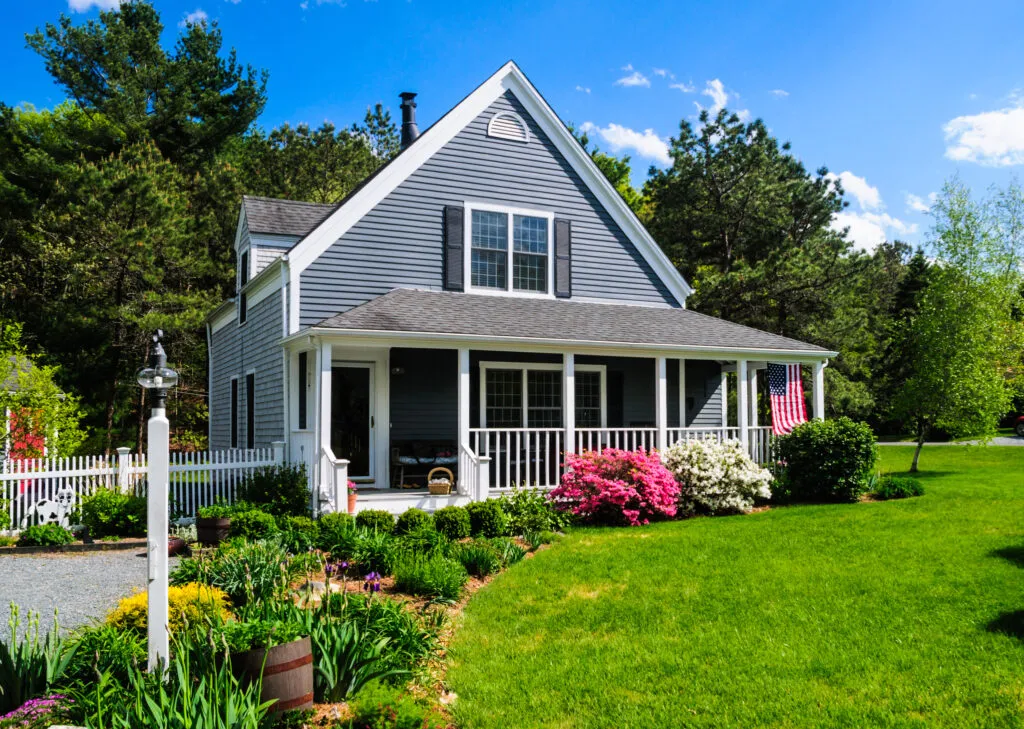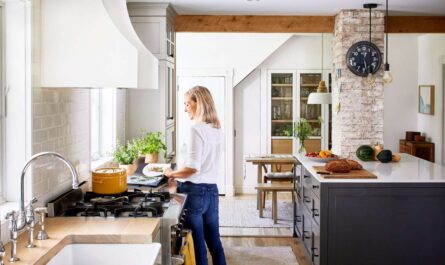In the age of environmental consciousness the Green Revolution is not just limited to agriculture or energy sectors. It has permeated the very walls of our homes influencing how we design build and renovate. As we become more aware of our ecological footprint the demand for sustainable homes has skyrocketed. But what does it mean to have an eco-friendly home? And more importantly:
What are Some Eco-friendly Home Improvement Ideas?
From energy-efficient appliances to sustainable materials the possibilities are endless. Whether you’re a seasoned homeowner or a newbie these eco-friendly home improvement tips will guide you towards creating a home that’s not only stylish but also kind to our planet.
1. Solar Panels: Harness the Power of the Sun
Why Solar? Solar panels are a direct response to the increasing need for renewable energy sources. By converting sunlight into electricity they offer homeowners a chance to reduce their carbon footprint significantly.
Benefits:
- Cost Savings: After the initial investment solar panels can drastically reduce electricity bills. In some cases excess energy can be sold back to the grid turning your home into a mini power station.
- Sustainability: Solar panels contribute to reducing greenhouse gas emissions making your home a part of the solution to global warming.
- Increased Property Value: Homes equipped with solar panels often have a higher resale value making them a sound investment.
2. Green Roofs and Walls: Nature’s Insulation
The Green Concept: Green roofs and walls are covered with vegetation turning urban spaces into green havens. They act as additional insulation reducing the need for artificial heating or cooling.
Benefits:
- Biodiversity: They provide habitats for birds insects and small animals promoting urban biodiversity.
- Air Quality: Plants absorb carbon dioxide and release oxygen purifying the air around your home.
- Aesthetic Appeal: They add a touch of nature to urban settings enhancing the beauty of your home.
3. Repurpose and Reuse: Give Old Items a New Life
The Upcycling Trend: Instead of discarding old items consider giving them a new purpose. This practice not only reduces waste but also offers a unique design element to your home.
Benefits:
- Cost-Efficient: Repurposing is often cheaper than buying new items.
- Personal Touch: Upcycled items carry a story adding character to your home.
- Environmentally Friendly: Reducing waste means less strain on landfills and the environment.
4. Eco-Friendly Paints: Breathe Easy
Beyond Colors: Traditional paints can release harmful chemicals. Eco-friendly paints on the other hand prioritize both aesthetics and health.
Benefits:
- Healthier Living: Reduced toxins mean better indoor air quality leading to fewer health risks.
- Diverse Range: Eco-friendly doesn’t mean limited choices. These paints come in a wide range of colors and finishes.
- Sustainable Production: The production process of eco-friendly paints often has a smaller carbon footprint.
5. Smart Home Systems: Efficiency at Your Fingertips
The Future is Smart: With the advent of IoT (Internet of Things) homes are becoming smarter. Devices can communicate with each other optimizing energy use.
Benefits:
- Convenience: Control your home’s functions remotely.
- Energy Savings: Smart systems ensure optimal energy usage reducing wastage.
- Safety: Many smart home systems come with security features adding an extra layer of protection to your home.
6. Rainwater Harvesting: Every Drop Counts
Water Wisdom: Collecting rainwater for reuse can make a significant difference in regions facing water scarcity.
Benefits:
- Reduced Water Bills: Utilize harvested water for non-potable purposes.
- Eco-Friendly: Reduces the strain on municipal water supplies and conserves natural resources.
- Gardening: Rainwater is often better for plants as it’s free from chemicals found in tap water.
7. Bamboo Flooring: Strength Meets Sustainability
Nature’s Answer to Flooring: Bamboo is a fast-growing grass making it a renewable resource perfect for flooring.
Benefits:
- Durability: Bamboo floors are often as strong if not stronger than traditional hardwood.
- Elegance: They offer a unique elegant aesthetic.
- Eco-Friendly: Bamboo’s rapid growth means less deforestation and a reduced carbon footprint.
8. Energy-Efficient Windows: A Clear View to Savings
More Than Just a View: Modern windows do more than offer a view; they play a crucial role in insulation.
Benefits:
- Temperature Regulation: They reduce heat loss in winters and block excessive heat in summers.
- Noise Reduction: Many energy-efficient windows also offer soundproofing qualities.
- UV Protection: Protect your interiors from harmful UV rays preventing fading of furniture and fabrics.
9. Natural Lighting: Let the Sunshine In
Embrace the Sun: Maximizing natural light can transform spaces making them feel larger and more welcoming.
Benefits:
- Mood Enhancer: Natural light has been shown to improve mood and productivity.
- Energy Savings: Reduce the need for artificial lighting during the day.
- Health Benefits: Exposure to natural light can regulate sleep patterns and boost vitamin D production.
10. Local Materials: Reduce the Carbon Footprint
Support Local: Using locally sourced materials is both an eco-friendly and community-supporting choice.
Benefits:
- Reduced Emissions: Less transportation means fewer emissions.
- Unique Design: Local materials can offer a unique authentic touch to your home design.
- Supporting Local Economy: Investing in local materials supports local businesses and artisans.
With these expanded points you’re well-equipped to make informed decisions about eco-friendly home improvements. Dive deep into each idea and let your home be a testament to sustainable living.
What Things to Keep in Mind While Implementing Home Improvements?
- Research: Before diving into any project research the best eco-friendly options available in your area.
- Budget: While some sustainable options might be pricier upfront they often lead to long-term savings.
- Professional Advice: Consult with professionals who have experience in green home improvements. They can provide insights and recommendations tailored to your needs.
- Maintenance: Ensure that you’re equipped to maintain any new installations or changes. For instance green roofs might require regular upkeep.
- Future-Proofing: Think about the long-term impact of your improvements. Will they add value to your home? Are they adaptable to future technological advancements?
Conclusion
The Green Revolution in home design is more than just a trend; it’s a necessary shift towards a sustainable future. By incorporating these eco-friendly home improvement tips you’re not only enhancing the aesthetic and value of your home but also playing a pivotal role in safeguarding our planet for future generations. Embrace the revolution and let your home be a beacon of sustainability!



